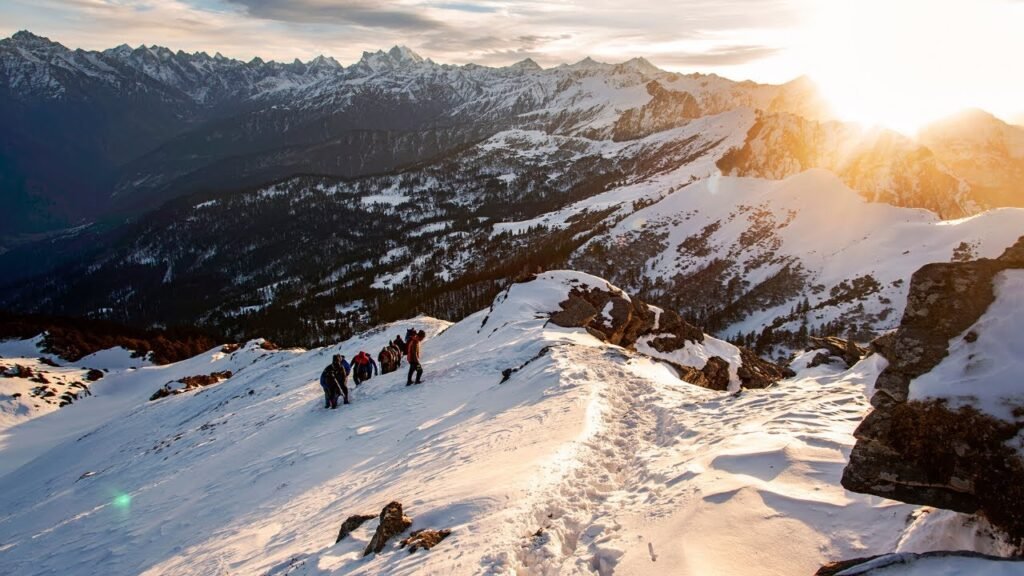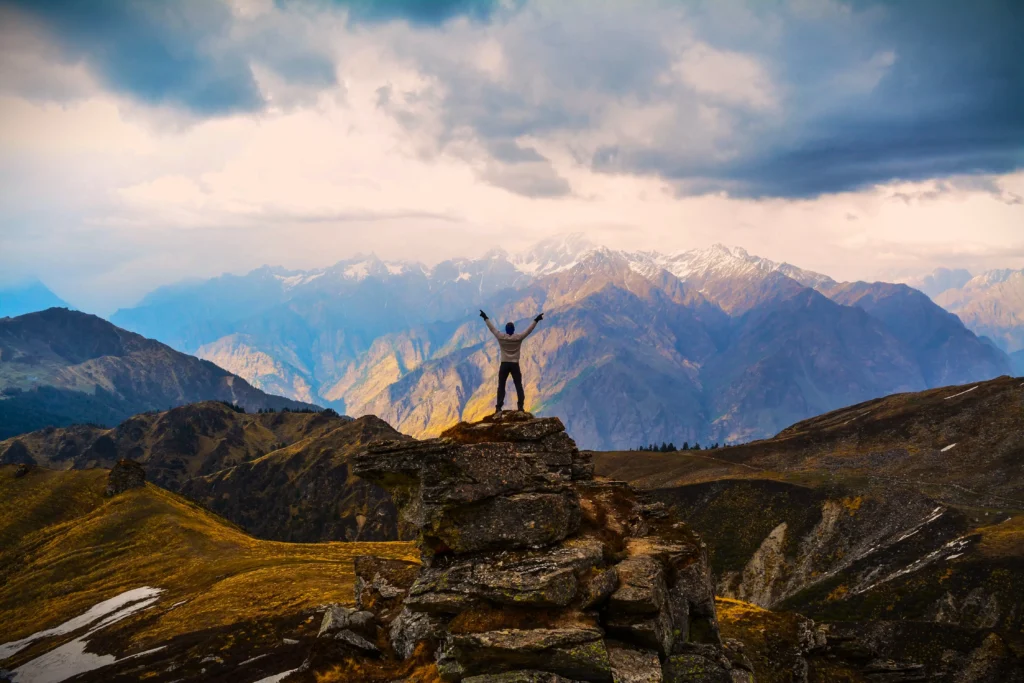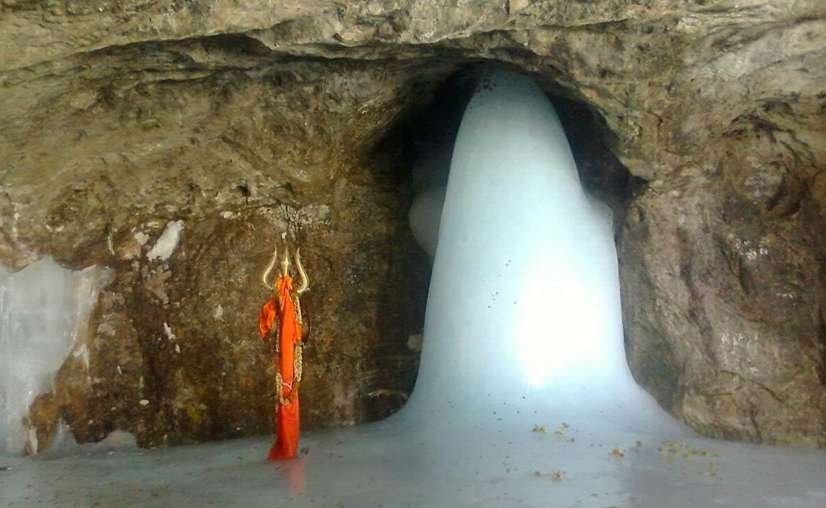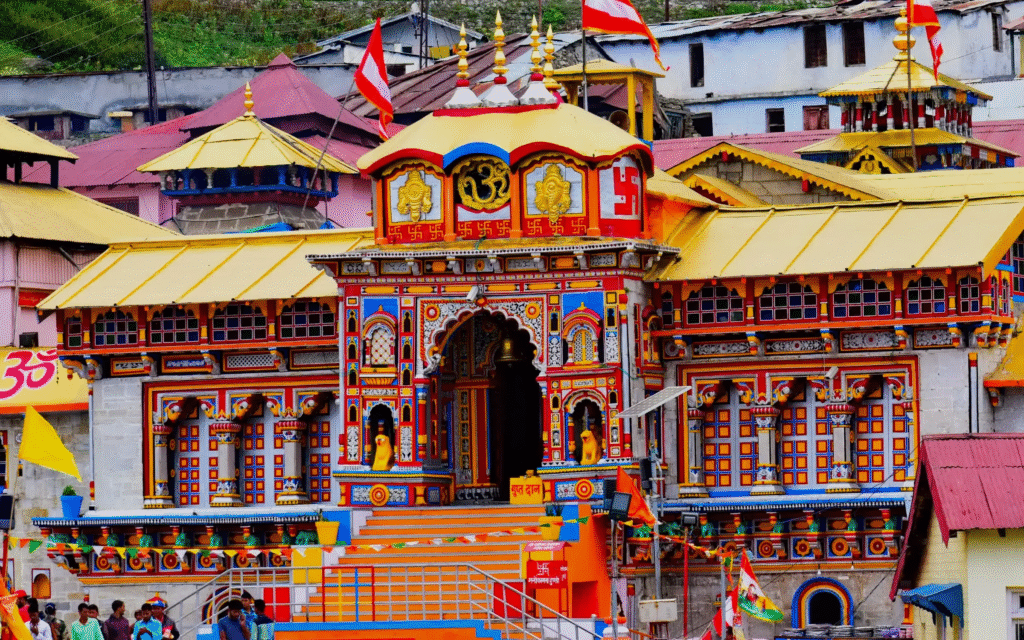
1. The Call to the Valley of Badri Vishal
You don’t just decide to go to Badrinath. That’s what the old-timers tell you, and I believe it now. You wait for an invitation from Badri Vishal himself. My invitation wasn’t a formal thing; it was a persistent, low-level ache—a spiritual homesickness that eventually drowned out all the racket of my everyday life. It was the quiet, stubborn plea of the Himalayas, coaxing me toward a place where the divine and the earth just… meet.
This whole trip, one of the famous Char Dhams, wasn’t about being a tourist. I was desperate for genuine, deep-down peace, a chance to dump my emotional baggage at Lord Vishnu’s feet. I needed a sanctuary, a place where the world’s constant anxieties could finally just blow away like dust.
The myths here aren’t just stories; they feel true. The one that sticks with me is about Vishnu meditating here, and the cold biting at him. Goddess Lakshmi—ultimate devotion personified—turned herself into a local Badri (Jujube) tree, standing guard, her branches sheltering him. To stand here is to stand in the quiet presence of that perfect, selfless, protective love.
My own goal was simple, maybe even a little selfish: I wanted clarity. I wasn’t asking for a lightning bolt or a miracle; I just wanted the quiet strength to handle my life with a little more grace. Just wanted to feel the truth of “Om Namo Bhagavate Vasudevaya,” not just recite it. Then,I was finally ready to stop searching and just start receiving the peace the mountain promised. This story is just my heart trying to catch up with my steps.
2. Up the Valley: The Road to the Divine
The road trip started in Rishikesh, the spot where the flatlands finally give way to the vertical world. Leaving the chaos and tourist frenzy behind, we started the climb into the fierce, stunning Garhwal Himalayas. That road—it’s a marvel of both raw nature and human stubbornness, a narrow ledge constantly clinging to the cliff face.
The drive felt like therapy. On one side, the colossal peaks clawed their way toward the clouds; on the other, the glacial Alaknanda River thundered, a constant, sharp reminder of just how powerful and clean nature can be. The air smelled amazing: pine, wet dirt, and a hint of wild mountain flowers. Every few miles, you’d see those bursts of orange, white, and blue—the prayer flags—flapping like thousands of silent wishes sent skyward.
Our rented jeep quickly became a little mobile temple. The driver had bhajans (devotional songs) cranked up, their steady rhythm meshing perfectly with the road’s endless twists and turns. Watching the people along the way was humbling: barefoot sadhus in their saffron, and local women offering hot tea to freezing yatris with the kind of genuine, no-strings-attached kindness you rarely see.
The closer we got, the quieter my brain became. The sheer, impossible scale of the mountains—impassively beautiful and impossibly old—forced a humility that made all my big, worrying problems feel stupidly tiny. The journey wasn’t just physical; it was peeling away my superficial layers, forcing me to find the simple, essential self hiding underneath. It was all about letting go.
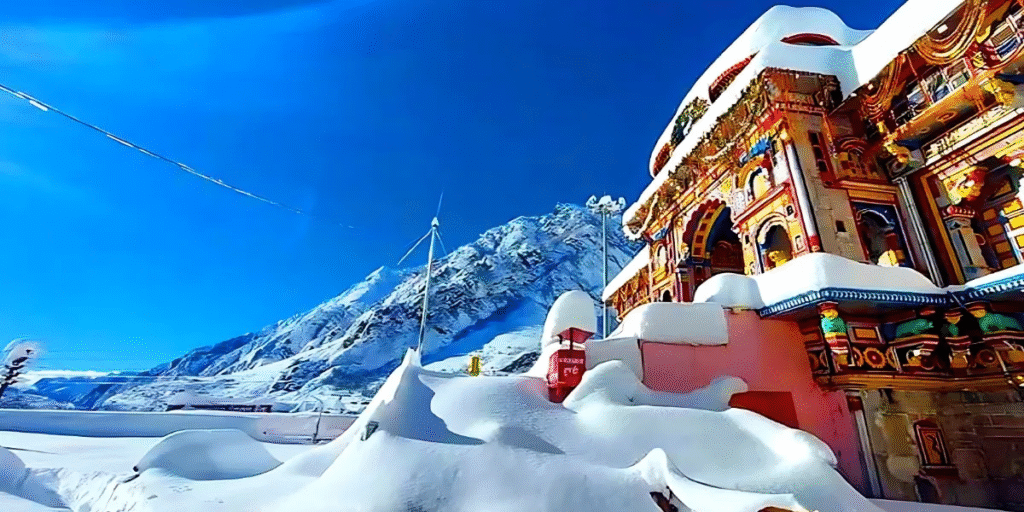
3. Badrinath: The Jewel Between the Giants
After what felt like forever on those winding roads, the final glimpse of the valley took my breath away. Suddenly, it opened up, and there was Badrinath town. It sat dramatically, tucked deep into the lap of the Nar and Narayana ranges, a bright splash of color—the lodges, the banners, the shops—against the grey rock and the eternal snows of the majestic Neelkanth Peak. The air hit me—intensely cold, sharp, but instantly clearing.
And then, the centerpiece: the Badrinath Temple. Its strong stone face and the bright, gorgeous golden roof stood out, almost impossibly, against the blinding white of Neelkanth.
Shuffled along in the queue, packed tight with hundreds of others, I watched the beautiful, simple humility of faith. I saw an old man, his hands shaking, fold them in perfect submission. I saw a woman silently whisper a frantic plea.
It was cool, dark, and thick with atmosphere. And there he was: Lord Badri Vishal. The image, they say, appeared on its own (swayambhu). It’s a simple, meditative figure carved from a deep black stone. His face, calm and incredibly ancient, held an expression of pure, unconditional compassion. His carved eyes seemed to lock onto mine, not judging anything, but just taking it all in. For a few seconds, the world completely dissolved. My physical exhaustion, my frantic quest for clarity, even my own awareness—it all just melted into a profound, speechless gratitude. Quiet, unexpected tears rolled down my face. It wasn’t sadness or grand excitement; it was just the overwhelming relief of being totally and completely unburdened. That’s when it hit me: Vishnu’s grace isn’t flashy; it’s simple, pure, and absolutely still.
4. Mana and the Myths: Beyond the Temple Walls
The powerful devotion here spills out past the temple walls, soaking into every stream and stone in the valley.
Before Darshan, the tradition is the cleansing bath in the Tapt Kund. This is a small, natural hot spring—a minor miracle in the freezing cold—where pilgrims bath. Stepping into the steam, surrounded by chanting people, felt like physically scrubbing the external world off, finally readying my soul for the divine encounter.
We saw Vyas Gufa and Ganesh Gufa, the caves where the sage Vyasa supposedly dictated the Mahabharata and Ganesha wrote it all down. Standing in those silent, cold chambers, you can feel the staggering weight of history and wisdom. The Bheem Pul—a massive boulder thrown across the rushing Saraswati River—is believed to be the stone bridge placed there by the mighty Bhima for Draupadi. Every landmark has a spiritual anchor.
One evening, I took a quiet walk along the freezing, aggressive Alaknanda River at sunset and finally found that moment of stillness. The villagers in their humble, brightly colored clothes—reflects a life lived close to the bone. They don’t have to seek faith; they are it. Sitting there, watching the river rush by, the realization dawned: faith isn’t some loud ritual. You feel it in the silence, in the shock of the cold, and in the sheer humility of the wind on your skin.
My silent prayer wasn’t a request at all, but a simple, heartfelt surrender. It was a thank you for the difficulty of the journey, because the effort had made the arrival so precious. The pilgrimage’s true purpose was to get me to this exact spot: stripped bare, bathed in light, listening to the mountains sing God’s name. It was a perfect, musical confirmation of grace.
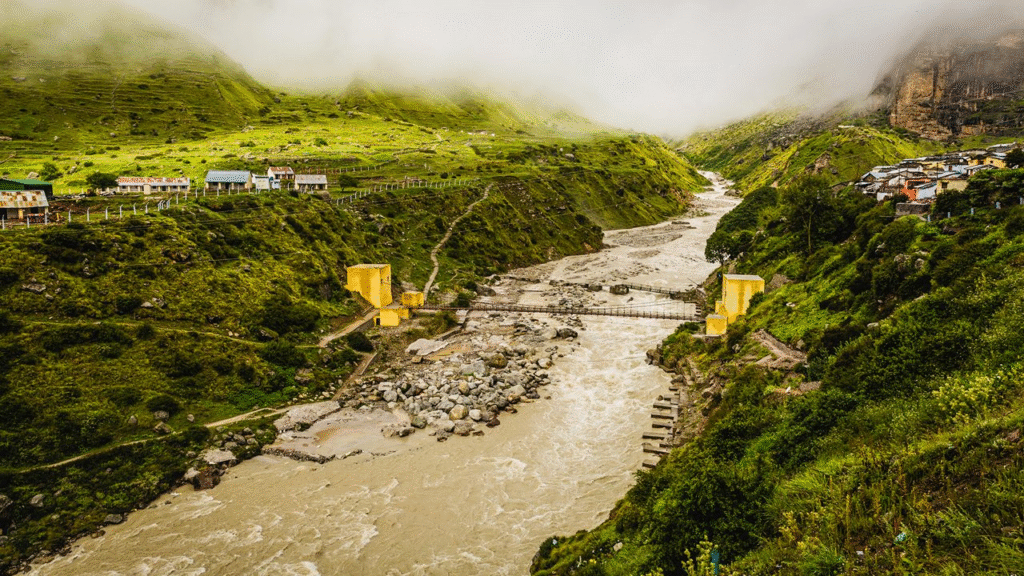
6. The Journey Home: Carrying Peace Within
Leaving the Badrinath valley the next morning was genuinely wrenching. The cold, crisp dawn air felt like a tearful, final goodbye. My heart was heavy with the sadness of leaving, but my soul felt unbelievably light, scrubbed clean by the mountain’s harshness and Vishnu’s gentle grace.
The drive down was entirely different from the climb up. The Alaknanda, which had roared so fiercely, now sounded like a steady, calm friend. The mountains, which had felt immense and slightly terrifying on the way up, now felt like old, comforting guardians.
I realized the real power of the trip wasn’t what I managed to find, but what I no longer needed to carry. I came searching for God, convinced He was waiting at the end of a very hard road. Instead, I left with the quiet, profound understanding that the journey had simply knocked down the internal walls I’d built, allowing me to finally notice the peace that had been waiting inside me all along.
Before we dropped too far down, I stopped and did one last symbolic thing: I poured a handful of the river water back into the sacred flow. The pilgrimage didn’t end at the temple; it ended right here, when I finally accepted that the inner journey was just beginning. You don’t end a pilgrimage where you start it; you end it where you wake up.
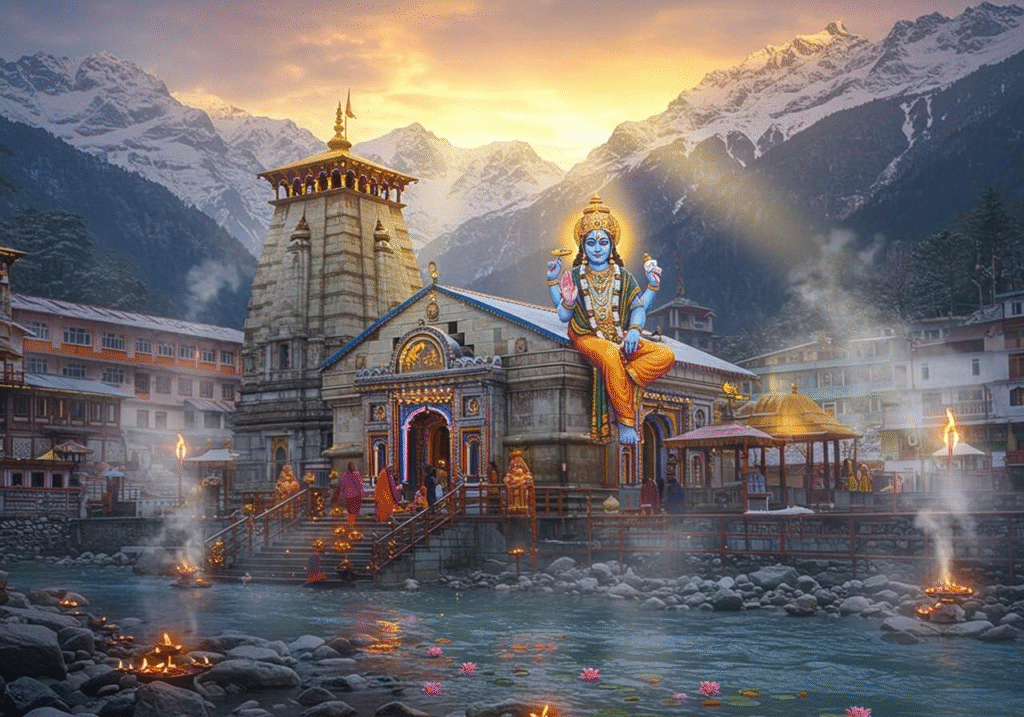
Yatra’s Tips
Best Time: The temple is open from late April until November. May–June or September–October for the best weather. Avoid the monsoons (July–August) due to landslide risk.
Altitude: Badrinath is very high (over 10,000 ft). Spend a night or two in Joshimath to acclimatize. Carry medicine for headaches.
Respect: Dress modestly in the temple complex. This entire area is considered sacred—please do not litter. Carry all your non-biodegradable trash out with you.
If you loved reading about this you might also like Kedarnath Yatra.


